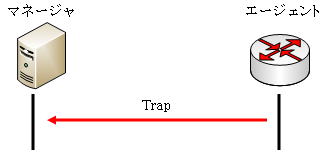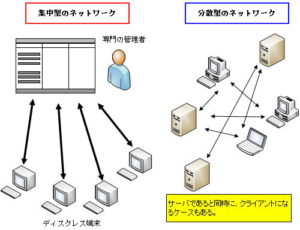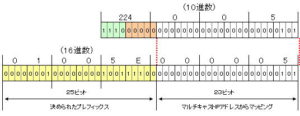SNMP (MIB, Polling/Trap, Message)
SNMP (MIB: Management Information Base)
Network devices that support SNMP have a database that stores management information about network devices called MIB (Management Information Base).
Each piece of management information stored in the MIB is called an object, and each object has a unique OID (Object Identifier) to uniquely identify the management information.
MIB objects are managed in a hierarchical structure as shown below.
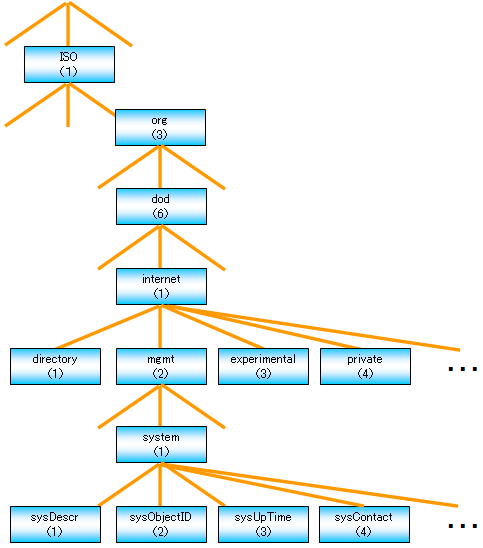
OIDs are expressed as numbers separated by periods.
For example, sysDescr, which means a description string about the device, is “.1.3.6.1.2.1.1”, and sysContact, which means the information of the node administrator, is “.1.3.6.1.2.1.4”. express.
The agent notifies MIB information in response to a request from the manager, and notifies the manager of a change in device status from the agent using a trap.
These notifications allow the manager to monitor the state of the network.
SNMP (polling/trap)
SNMP can monitor network status by the following three types of operations.
- Manager to Agent Requests and Responses
- Management information update request from manager to agent and its response
- Notification of state change from agent to manager

The basic operation of SNMP is polling, in which the manager issues a command and the agent responds to it. It is also possible to make a notification called Trap from the side.
Managers can also request updates from agents.
SNMP (message)
5 Commands to Perform Kinds of Functions
SNMP manages networks by exchanging SNMP messages between managers and agents. This SNMP message contains the SNMP version, community name, and PDU (Protocol Data Units).
SNMP versions include v1, v2, and v3.
A community name is a character string that acts like a password between a manager and an agent, and is used to group devices to be managed. If the community name does not match, communication will not be possible.
The PDU has five types of data corresponding to SNMP commands, as shown in the table below.
● PDU from manager to agent
| SNMP messages | explanation |
| GetRequest | Specify one or more objects by OID and request information acquisition of the objects. |
| GetNextRequest | Specify one or more objects by OID and request information acquisition of the next object in the hierarchy. |
| SetRequest | Specify one or more objects by OID and request to change the information of the objects. |
● PDU from agent to manager
| SNMP messages | explanation |
| GetResponse | Responses to requests from the manager (GetRequest, GetNextRequest, SetRequest) |
| Traps | Automatic notifications when specified events are detected, errors occur, and thresholds are exceeded |
◆ Requests from managers to agents and their responses
● Request by GetRequest
The manager uses GetRequest to specify one or more objects by OID and request information acquisition of the objects. The agent responds with GetResponse.
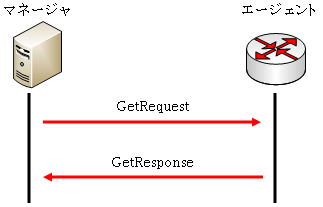
● Request by GetNextRequest
The manager uses GetNextRequest to specify one or more objects by OID and request information acquisition of the hierarchically next object. The agent responds with GetResponse.
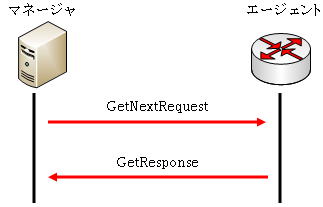
◆ Management information update request from manager to agent and its response
The manager uses SetRequest to specify one or more objects by OID and requests to change the information of the objects. The agent responds with GetResponse.
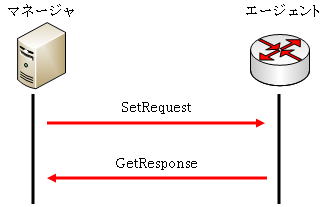
◆ Notification of status change from agent to manager
When the agent detects a specified event, when an error occurs, or when the threshold is exceeded, the agent spontaneously notifies the manager with a trap.
